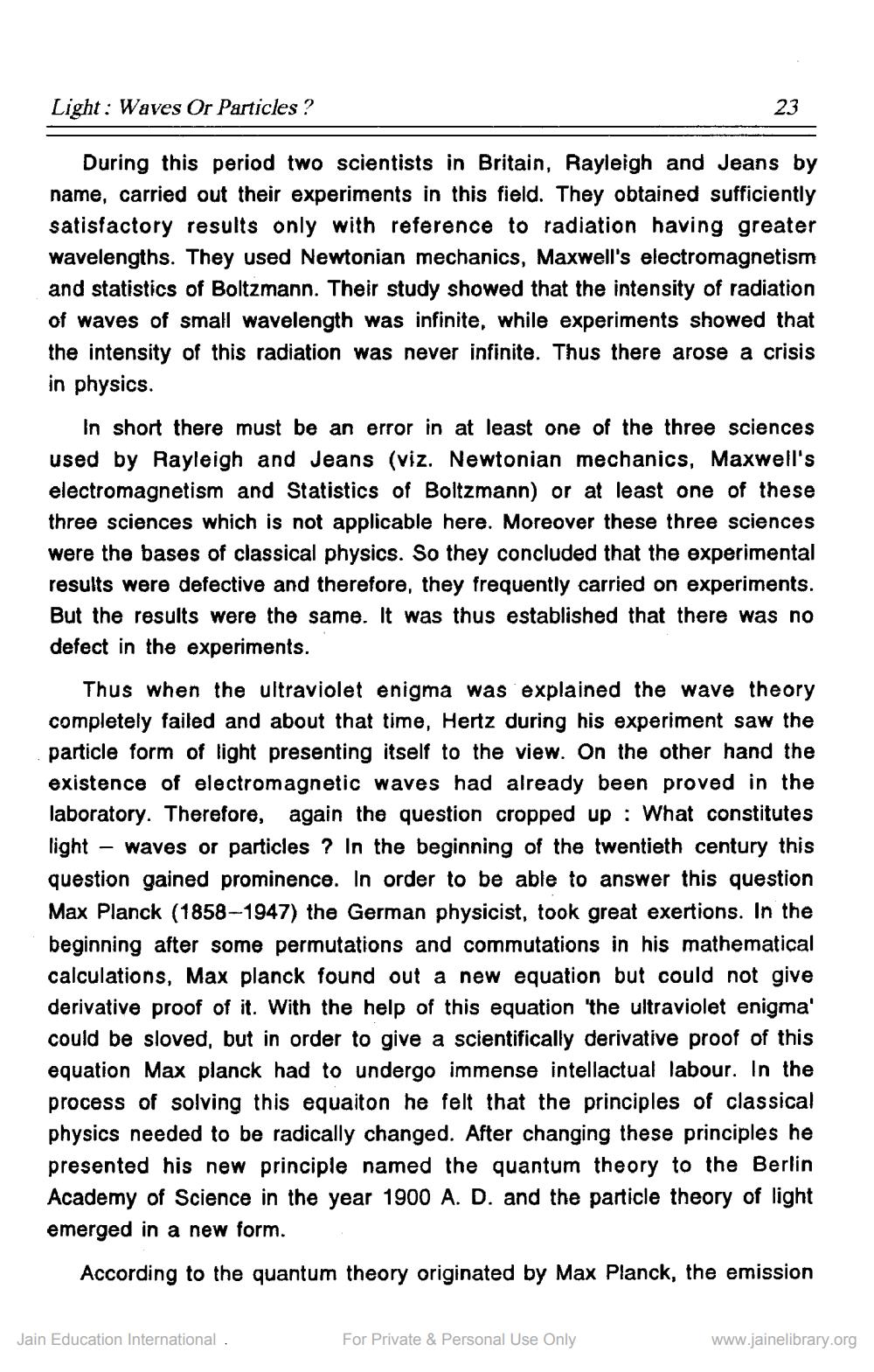________________
Light : Waves Or Particles ?
During this period two scientists in Britain, Rayleigh and Jeans by name, carried out their experiments in this field. They obtained sufficiently satisfactory results only with reference to radiation having greater wavelengths. They used Newtonian mechanics, Maxwell's electromagnetism and statistics of Boltzmann. Their study showed that the intensity of radiation of waves of small wavelength was infinite, while experiments showed that the intensity of this radiation was never infinite. Thus there arose a crisis in physics.
In short there must be an error in at least one of the three sciences used by Rayleigh and Jeans (viz. Newtonian mechanics, Maxwell's electromagnetism and Statistics of Boltzmann) or at least one of these three sciences which is not applicable here. Moreover these three sciences were the bases of classical physics. So they concluded that the experimental results were defective and therefore, they frequently carried on experiments. But the results were the same. It was thus established that there was no defect in the experiments.
Thus when the ultraviolet enigma was explained the wave theory completely failed and about that time, Hertz during his experiment saw the particle form of light presenting itself to the view. On the other hand the existence of electromagnetic waves had already been proved in the laboratory. Therefore, again the question cropped up : What constitutes light – waves or particles ? In the beginning of the twentieth century this question gained prominence. In order to be able to answer this question Max Planck (1858–1947) the German physicist, took great exertions. In the beginning after some permutations and commutations in his mathematical calculations, Max planck found out a new equation but could not give derivative proof of it. With the help of this equation the ultraviolet enigma' could be sloved, but in order to give a scientifically derivative proof of this equation Max planck had to undergo immense intellactual labour. In the process of solving this equaiton he felt that the principles of classical physics needed to be radically changed. After changing these principles he presented his new principle named the quantum theory to the Berlin Academy of Science in the year 1900 A. D. and the particle theory of light emerged in a new form.
According to the quantum theory originated by Max Planck, the emission
Jain Education International.
For Private & Personal Use Only
www.jainelibrary.org




